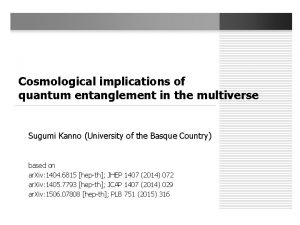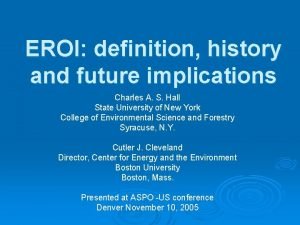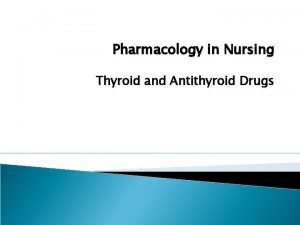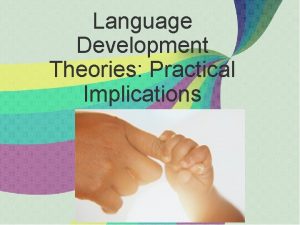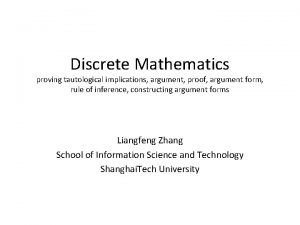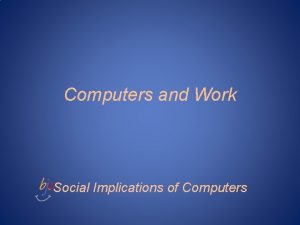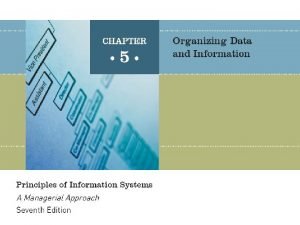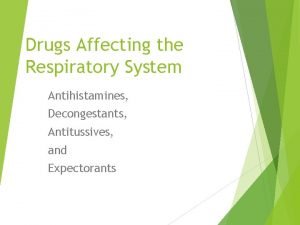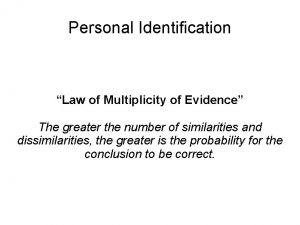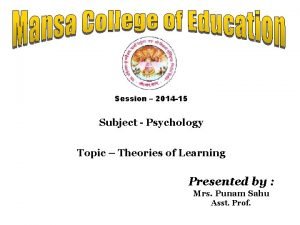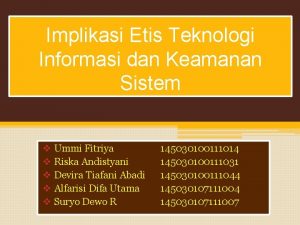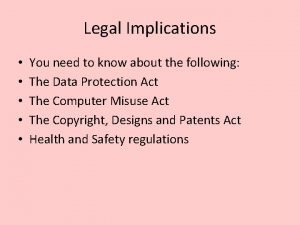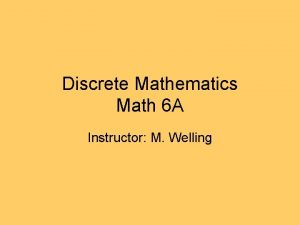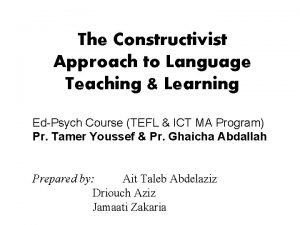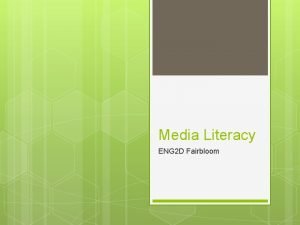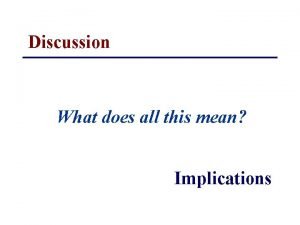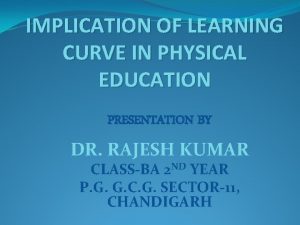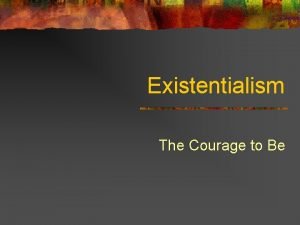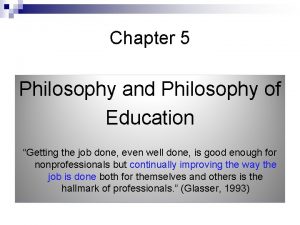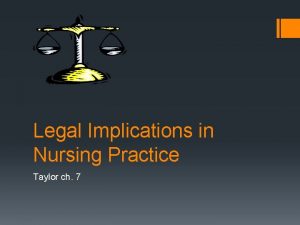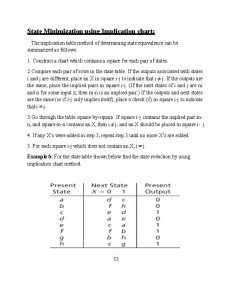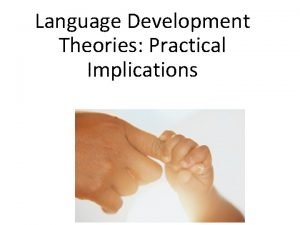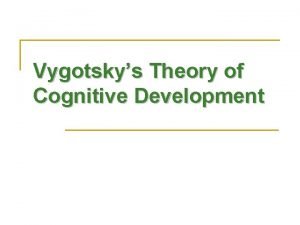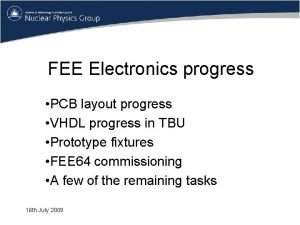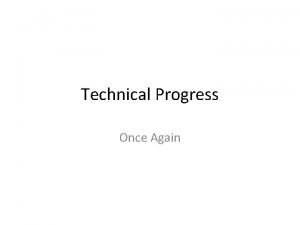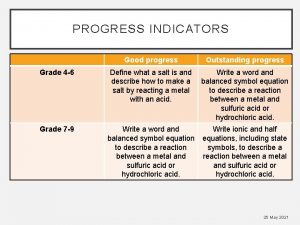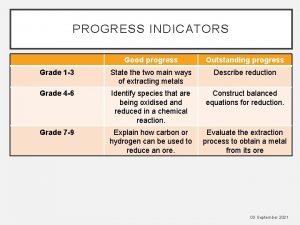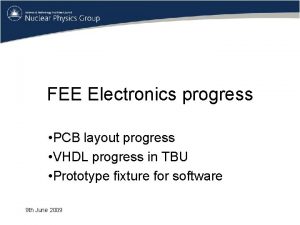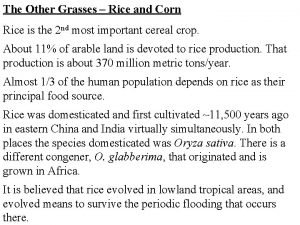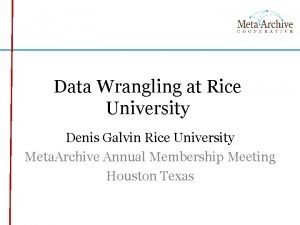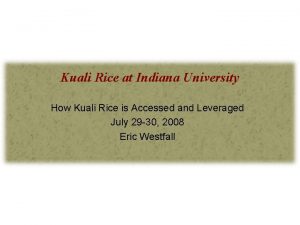RICE experienceANITA implications Review of RICE progress to


































- Slides: 34

RICE experience/ANITA implications • Review of RICE progress, to date • Current Status – Focus on major systematic errors and status of understanding of background • Possible future improvements and prospectus

Scorecard (in hindsight) • (-) electron testbeam run (kudos to David & Peter) • (-) proton testbeam run (FNAL plans) • (-) more ice properties studies (limited time at Pole), despite limited and conflicting measurements of dielectric constants of cold ice (alfa 0. ps & seckelfig) • (-) invested considerable personpower in ZHS/GEANT shoot-out – EZ pointed out that one of the default GEANT settings not tuned for tracklength studies – still not fully resolved - GEANT 3. 21/4 gives 10% less tracklength, but 10% more peak E-field @ 1 GHz – more high-frequency power

Scorecard, cont. • (-) Development of Matched Filter lagged • (-) Single channel gain calibration needs more finetuning and work with Tx<->Rx data • (-) Identified: – MAPO backgrounds – AST/RO backgrounds – Background X (correlation with solar flare activity? ? ? )

Scorecard (in hindsight) • (+) demonstrated viability of radio technique in ice; no show stoppers en route to publication • (+) Kept costs down by: – 2 undergrads == 1 postdoc (by necessity) – using duct tape – using more duct tape – using local grocery store as lab space

Duct tape

Antenna testing in the Checkers supermarket vegetable freezer, prior to deployment

Limitations & systematics (I) • Timing resolution (particularly for distant vertices, where most of neutrino interactions occur) (MC) – calibrate ch. -response online? (like in-line guitartuner) – matched filter to get to large Aeff and <ns time resolution. • Ice properties - Re(epsilon) and Im(epsilon), particularly through the firn – Plan to do high-statistics Tx measurement 2002 -03? – And through lower depths (Greenland data? ) – (to what extent does surface act like giant RF mirror? ) • Inability to exploit high-frequency power (MC) • Non-optimized antenna spacing, antenna BW (MC)

Limitations & Systematics (cont. ) • Modeling uncertainties: – Raw signal power, G 4 vs. G 3. 21 (ABAN=0) vs. ZHS – 30% discrepancy between G 3. 21 (ABAN=1) and ZHS now <10%. • BUT: power spectra (E(f)) disagree • E(peak)/tracklength ratio disagree at 10 -15% level – LPM effect, coherence between hadronic & EM pieces • Basic Problem: Veff grows with r, so most of Veff is at very edge of sensitive volume!!!

Systematics - details, in sequence • Timing resolution – Compare 4 different hit-times: • • Le. Croy 3377 TDC time (500 ps) Time of maximum voltage in a waveform (integrated over 1 ns) Time of 1 st 6 -sigma excursion in a waveform (1 ns) Time as returned by a matched-filter (Figs. Showing different possible signals, depending on antenna response). – Lower thresholds, better than 1 ns timing resolution – LOW THRESHOLDS == MORE EFFECTIVE AREA! – IDEALLY - want matched filter in hardware, for now, only software – Figure-of-merit: vertex resolution using low-amplitude transmitter evts. , comparing all four hit times:

The test signals Have k ranging +/- 20%, and Frequency ranging +/- 10%. Test Signals The “junk” signalsinclude spikes, decaying oscillations with wrong frequency, correct frequency with no decay, and large patches of white noise. Junk Signals + Noise Signal Squared Start of each signal is 200 time steps after previous signal. Amplitude Energy Signal to Noise in this run: 5: 1

A 2/C 2 The quality measure spikes sharply for the test signals. Although it looks small even the spike at 600 is substantial. If we drop the spectrum match from the measure, we pick up decaying osillators of any frequency, and a few other bumps that could be false positives.

Signal to noise = 3: 1

Ksignal Distribution of Q for K and/or w deviating from expected value Signal to Noise: 0: 1 0. 6 K 0. 8 K K 1. 2 K 1. 4 K 0. 8 w 0. 9 w w wsignal 1. 1 w 1. 2 w

Signal to Noise: 2: 1 Distribution of Q for K and/or w deviating from expected value 0. 6 K 0. 8 K K 1. 2 K 1. 4 K 0. 8 w 0. 9 w w 1. 1 w 1. 2 w

Signal to Noise: 5: 1 Distribution of Q for K and/or w deviating from expected value 0. 6 K 0. 8 K K 1. 2 K 1. 4 K 0. 8 w 0. 9 w w 1. 1 w 1. 2 w

Signal modeling and transmission • LPM & Re(epsilon) - attenuation length dictates Veff (or Aeff) at high energies • Im(epsilon) - ray tracing through the firn with ANITA will be more difficult than with RICE (hopefully, RICE 2002 -03 data will help here). • Antenna properties better with ANITA - calibrated in air (RICE calibrated initially in air, then crosschecked in ice).

Measurements of field atten. length Primary dependence on temperature profile through the ice Also: extrapolate into <GHz regime using highfrequency lab data + Debye model (matsuoko)

Temperature v. depth measurements

Propagation – Im(dielectric constant) ü Index of refraction q Absorption Simultaneous fit to Rx, Tx positions and n(z)

New simulation results (ABAN=0) Can we measure highfrequency power?

Effective height measured at KUATR Measurements made in air, then “evolved” to n=1. 78

Pulse shape simulation Problem: How to apply matched filter in hardware? Need 1 GHz BW Tx calibration signal Background taken from data sample Disc. threshold

Compare MC vs. data for shape Need: transmitter with calibrated and well-defined shape to test complex transfer function

Single Channel Calibrations TX…. RX • antenna + amplifier calibrations • cable (TX, RX) and filter • relative geometry of TX/RX 200 -500 MHz: +/- 3 d. B (E) ANITA will need full circuit gain over long baseline, as well. Best if Tx==Rx

What the previous slide means • We superimpose CW on thermal floor, and find that thermal floor is consistent (within 1 d. B) of Tnoise+Tamplifier noise figure for f~200 -800 MHz • RF x-talk between RICE Rx and AM-cable either somehow averages out or can be neglected – RF x-talk from RICE Rx to RICE Rx not seen (verified using pulser tests also), although dt>100 ns between successive channels. X-ringing in ANITA? • Ice absorption negligible on the scale of the RICE array (~200 m) for f~200 -800 MHz.

Background characterization • There is a strong, short-duration source which has persisted over the 4 years that we have taken data – “Diffuse” vertex location, rejectable as z>-50 m source with 98 -99% efficiency on-line. • Seeking better bkgnd. Rejection for >2002 – Variable numbers of hit channels, large amplitudes, double pulses often evident (not a raytracing effect) – Strongest in “dry holes” (also highest gain holes) – Weakest in summer, strongest in winter. • Consistent with anthropogenic source • Also consistent with solar flare source? ? ? Circumstantial evidence. Investigating now. Have looked (sans success) for shadowing - but RF bkgnd. probably doesn’t track visible.


Field-of-view dependence on n • Because of refractive effects, viewing volume of inair antennas is VERY sensitive to knowledge of index-of-refraction (Fig. )

Can ANITA see RICE Tx? • For 300 V p-p Tx coupled to TEM horn, Z~50 Ohm, r~106 m, E~1 m. V/m (~10 Vthermal) – CW may be better, using spectral analysis • Other alternatives - broadcast from SIPLE / Dome C / Mc. Murdo / Vostok / AGO’s. . .

LPM effect and uncertainties • UHE e- no longer see “distinct” nuclear scatterers in medium=>brem quasi-continuous. – Perform coherent sum of scattering amplitudes over “coherence length”. – Feynman diagrams cancel pairwise • Brem xsct reduced, shower is “elongated” • Established effect (measured by Stu Klein), however, untested (obviously) at >Pe. V energies • Uncertainties remain (e. g. , above 200 Pe. V, photonuclear interactions competitive with brem? If so: a) photoproduction of hadrons in shower, b) higher interaction xsct=>elongation reduced.

LPM and hadronic showers “Hadronic” Es = 20% En 2. Without LPM L o g V eff km 3 1. With LPM 0. 1. 2. 3. - 1. 2. 3. 4. Log Es Pe. V 5. 6.

Future Plans • 3 -year proposal submitted to NSF for 800 K June 1. – At usual rate of RICE funding, expect 50 K-80 K • Focus on improving DAQ (pg/sk high BW ANITA digitizer, will require at least one dedicated gradstud) – ICECUBE digitizers probably too low in BW • Hope for co-deployment with ICECUBE using ANITA digitizers + updated trigger formation hardware/software. • DS: X-RICE

Systematics (see astro-ph/0206371)

RICE, review and current status • 1995 -99: development and deployment – 1996: main funding (230 K MRI) – 1999: 130 K supplement – Since total budget averages ~50 K/yr: • have relied heavily on undergrad/grad students rather than hiring postdocs (3 Goldwaters!) • design compromises: coax signal transmission, off-the-shelf electronics (digital scopes + CAMAC) • NO experimental results without the help of AMANDA!! • 1999 -2002: calibration, analysis, simulation, publication – 2002: first papers appear (2) in Astropart. Phys.
 Physical progress and financial progress
Physical progress and financial progress 3002001030
3002001030 Future implications definition
Future implications definition Consumer behavior cengage
Consumer behavior cengage Glargine nursing implications
Glargine nursing implications Nursing implications for synthroid
Nursing implications for synthroid Implications of nativist theory
Implications of nativist theory Medical implications of developmental biology
Medical implications of developmental biology Tautological implication
Tautological implication Trends and issues in nursing
Trends and issues in nursing Social implications of computers
Social implications of computers Database approach
Database approach Nursing implications
Nursing implications Benzonatate nursing implications
Benzonatate nursing implications Illustrate the law of multiplicity of evidence
Illustrate the law of multiplicity of evidence Classical conditioning theory
Classical conditioning theory Implikasi etis
Implikasi etis What is legal implications
What is legal implications Example of proposition in math
Example of proposition in math Inotropic agents
Inotropic agents Chapter 23 legal implications in nursing practice
Chapter 23 legal implications in nursing practice Constructivism
Constructivism Educational implications examples
Educational implications examples Capsofungin
Capsofungin How audience negotiate meaning in mil
How audience negotiate meaning in mil Discussion and implications
Discussion and implications Learning curve in physical education
Learning curve in physical education Epistemology of existentialism
Epistemology of existentialism Perennialism in education
Perennialism in education Legal dimensions of nursing practice
Legal dimensions of nursing practice Ranexa nursing implications
Ranexa nursing implications Implications table
Implications table Implications of nativist theory
Implications of nativist theory Legal implications of social media
Legal implications of social media Vygotsky guided participation example
Vygotsky guided participation example

